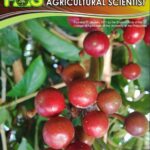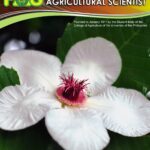Vol.107, No. 2 (Jun 2024)
Philippine native roosters Banaba, Joloano and Paraokan. These animals were used to established baseline data on the quantity and quality of fresh avian semen.
{Photograph courtesy of Dr. Percival P Sangel, Institute of Animal Science, College of Agriculture and Food Science, University of the Philippines, Los Baños, College, Laguna}
Categories
Articles
Microbiological and Physicochemical Changes in Rabbit Meat During Ambient Storage
Marielle D. Gamboa, Dennis Marvin O. Santiago, April Shayne L. Sulabo, and Mary Ann O. Torio
Received: October 5, 2023/ Revised: April 12, 2024/ Accepted: April 17, 2024
This study aimed to evaluate the changes in rabbit meat during storage at ambient temperature (30 ± 1 ºC) for nine hours. The study focused on two rabbit muscle parts: the hind leg and the saddle, investigated in terms of microbiological parameters such as aerobic plate count (APC) and total coliform count (TCC); and physicochemical parameters such as pH, color, total myoglobin concentration, and lipid oxidation. Data obtained were subjected to statistical analysis at a 5% significance level (p < 0.05). Results revealed that the pH of both portions of rabbit muscle decreases over time during storage. This decrease is attributed to the growth of acid-producing microorganisms, which ulti...
This study aimed to evaluate the changes in rabbit meat during storage at ambient temperature (30 ± 1 ºC) for nine hours. The study focused on two rabbit muscle parts: the hind leg and the saddle, investigated in terms of microbiological parameters such as aerobic plate count (APC) and total coliform count (TCC); and physicochemical parameters such as pH, color, total myoglobin concentration, and lipid oxidation. Data obtained were subjected to statistical analysis at a 5% significance level ...
Baseline Characterization of Semen from Philippine Native Chickens: Banaba, Joloano, and Paraoakan
Darcy R. Pamulaklakin, Carla Alilie L. Junsay, Consuelo Amor S. Estrella, and Percival P. Sangel
Received: November 20, 2023/ Revised: April 3, 2024/ Accepted: April 18, 2024
The study aimed to characterize and establish baseline data on the quantity and quality of fresh avian semen utilizing a sample of Philippine native roosters. Twenty-two heads each were acquired from breeds Banaba, Joloano, and Paraoakan. The baseline data analysis revealed significant variations in semen volume among different genetic groups, with Banaba displaying the highest volume, followed by Joloano and Paraoakan. Banaba also exhibited the highest semen pH value of 7.27 when compared to the other two genetic groups (p < 0.05). Across various genetic groups of native chickens, the majority of semen samples demonstrated a thick and creamy consistency and color (42.6%), followed by ...
The study aimed to characterize and establish baseline data on the quantity and quality of fresh avian semen utilizing a sample of Philippine native roosters. Twenty-two heads each were acquired from breeds Banaba, Joloano, and Paraoakan. The baseline data analysis revealed significant variations in semen volume among different genetic groups, with Banaba displaying the highest volume, followed by Joloano and Paraoakan. Banaba also exhibited the highest semen pH value of 7.27 when compared to...
Development of Active Packaging Films Using Cacao (Theobroma cacao L.) Pods and Calamondin (Citrus x microcarpa Bunge) Peels
Julienne Stephanie Fabie-Agapin and Dennis Rojas Marcelino
Received: May 15, 2023/ Revised: February 26, 2024/ Accepted: March 13, 2024
This paper presents the properties of active films produced using cacao pods and calamondin peels. An active film is a type of packaging material that is made by incorporating the “active” ingredients for preservation on the packaging film rather than a direct application to foods. In this study, the conversion to active films was done by adding essential oils from lemongrass or calamondin peels, which are both known to exhibit antimicrobial properties. There were five film samples prepared for analysis: cacao-calamondin mixture; cacao-calamondin mixture with lemongrass essential oil; cacao-calamondin mixture with calamondin essential oil; cacao-calamondin mixture with encapsulated lemong...
This paper presents the properties of active films produced using cacao pods and calamondin peels. An active film is a type of packaging material that is made by incorporating the “active” ingredients for preservation on the packaging film rather than a direct application to foods. In this study, the conversion to active films was done by adding essential oils from lemongrass or calamondin peels, which are both known to exhibit antimicrobial properties. There were five film samples prepared f...
Genetic Diversity Analysis of Greater Yam (Dioscorea alata L.) Collections Using Tuber Morphology and Simple Sequence Repeats (SSR) Markers
Junelyn B. Ravelo, Lara Jaaziel Batalon, and Antonio G. Lalusin
Received: March 27, 2023/ Revised: April 8, 2024/ Accepted: April 12, 2024
The diversity of 148 greater yam (Dioscorea alata L.) accessions from the collections of the National Plant Genetics Resources Laboratory (NPGRL), Visayas State University (VSU), and the Institute of Crop Science - University of the Philippines Los Baños (ICROPS-UPLB) was evaluated using 54 Dioscorea-based SSR markers. Polymorphic bands were amplified in 50 out of 54 SSR markers with Polymorphic Information Content (PIC) values ranging from 0.65 to 0.89. Subsequent cluster analysis generated nine distinct clusters with a Jaccard’s distance index of 0.85, implying 85% dissimilarity among the greater yam accessions. Each formed cluster from the analysis comprised a varying number of accessi...
The diversity of 148 greater yam (Dioscorea alata L.) accessions from the collections of the National Plant Genetics Resources Laboratory (NPGRL), Visayas State University (VSU), and the Institute of Crop Science - University of the Philippines Los Baños (ICROPS-UPLB) was evaluated using 54 Dioscorea-based SSR markers. Polymorphic bands were amplified in 50 out of 54 SSR markers with Polymorphic Information Content (PIC) values ranging from 0.65 to 0.89. Subsequent cluster analysis generated ...
Short-term Response of Soil Microbial Community and Soil Bio-chemical Properties to Soybean Intercropping in a Cassava-based Cropping System
Nolissa D. Organo, John Lester V. Pide, Michelle Anne M. Calubaquib, Elmer E. Enicola, Evelyn F. Delfin, Vanessa F. Calderon, Raymund M. Antiola, Hosne A. Dilzahan, and Andre F. Cruz
Received: February 16, 2022/ Revised: November 17, 2023/ Accepted: February 6, 2024
A cassava-based cropping system study assessed the short-term response of soil chemical and biochemical properties and soil microbial communities to soybean intercropping. Two soybean varieties (‘Select Manchuria’ and ‘Tiwala 12’) were tested as intercrops. The treatments did not affect the soil’s chemical (pH, OM, N, P, K) and biochemical (basal respiration and dehydrogenase and urease enzyme activities) properties after one cropping period. Amplicon sequencing analysis found that intercropping promoted the abundance of bacterial orders Actinomycetales, Solibacterales, Sphingomonadales, and Rhodospirillales. These groups play active roles in organic matter decomposition and can potential...
A cassava-based cropping system study assessed the short-term response of soil chemical and biochemical properties and soil microbial communities to soybean intercropping. Two soybean varieties (‘Select Manchuria’ and ‘Tiwala 12’) were tested as intercrops. The treatments did not affect the soil’s chemical (pH, OM, N, P, K) and biochemical (basal respiration and dehydrogenase and urease enzyme activities) properties after one cropping period. Amplicon sequencing analysis found that intercropp...


